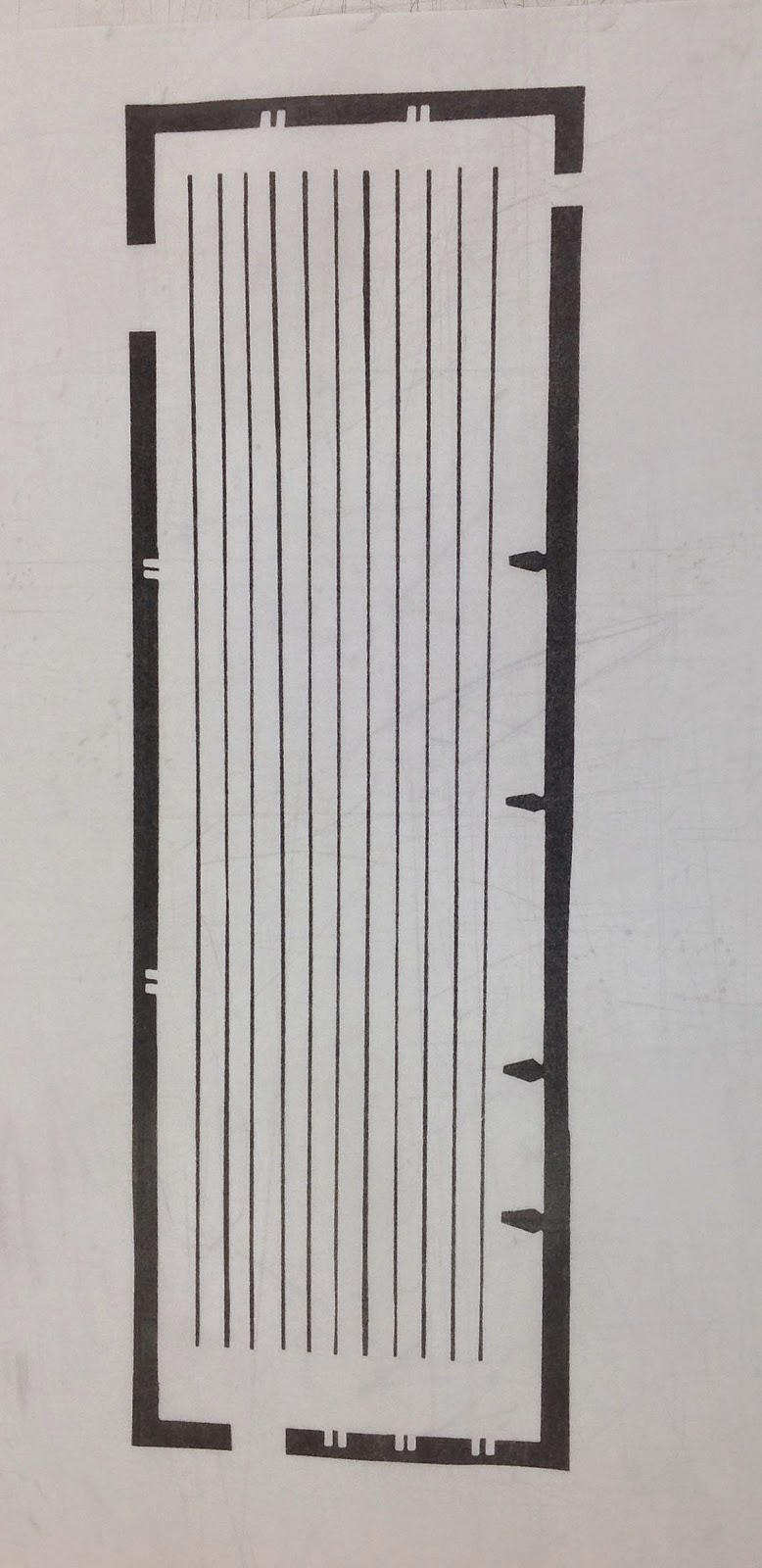Following on from tutorial with Angie Cockayne my first priority was to examine the variety of paper for print work that were available to buy from the Print Studio. My focus is to start making some finished work on good quality paper. For today's exercise I chose a lightweight Japanese paper to print on, first cutting a stencil that represented a field adjacent to my home. This diagrammatic approach had been prompted by looking at the Indian artist Zarina Hashmi's work (recommended by Mandy Bonnell). This work was very different in style to previous work which has reflected a more romantic and painterly portrayal of the Oak tree. However, I decided to pursue the concept and perceived that this geometric format could be extended in several ways. Small images referencing the Oak tree components could be added around the edge, either by printing direct or making small paintings which could be pinned on. Alternatively it could be used as an anchor work that related to the original concept which had been generated by my walks in the local fields. The stencil was reasonably well cut and clean, but once again I made the mistake of forgetting to reverse the drawing when printing! Three prints were run through the etching press 1) printed on textured side 2) on the reverse smooth side and a third printed onto a larger piece of paper so as to create more space around edges. The textured side produced a darker, stronger edged print and the smooth side was more muted, resisting the ink more, This softer tone reflected and echoed more with the fragility of the paper.
I have reservations as to this very geometric format, yet I am drawn to the concept of presenting two different styles together. Links can still be forged with use of monochrome palette, calligraphic mark making and subject - it can be perceived as bringing together of the sciences rather than separating them - reference here to geopoetics in that everything in the world is connected. There is also the possibility of combining the two styles. This could extend the viewers interpretation of imagery on more levels - create more questions? All the symbols represent trees, one references the Celtic Ogham symbol for tree, the coffin shape represents ancient oak trees that were cut down during a dispute with local villagers and the tenant farmer who worked the field. This is an agricultural field that produces several different crops each year and the shape of the field has been dictated by the mature oaks that sit on the perimeter.


The prints were not entirely clean and would need printing again should they be included at end of year Degree Show. Keeping prints clean is always a challenge.
Below is an image by Zarina Hashmi - 'The Straight Path' 2011 Woodblock on Paper



No comments:
Post a Comment